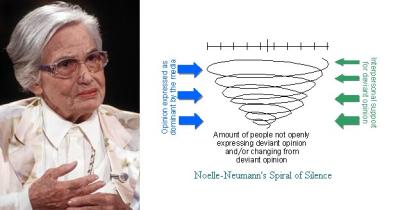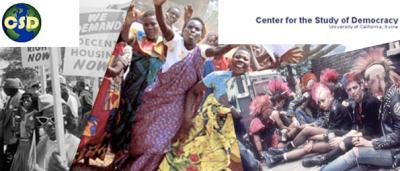Noelle-Neumann's Spiral of Silence and voicing opinion in the blogosphere

I just scanned a paper by Korean researcher Jeong Kim that links the Spiral of Silcence theory to processes in the blogosphere. In short, SoS theory states that individuals with opinions that contradict majority opinion tend to remain silent, while individuals who feel like they are representing the majority tend to speak up.
Jeong Kim asks what this concept means in the realm of blogs where, in contrast to 'big media' such as TV and newspapers, minority opinions can (technically) be easily voiced and interaction is possible on a one-to-one level.
What´s particularly interesting about this paper is the researchers methodology: he asks two (quite prominent) Korean bloggers to act as his informants and to reveal in their blogs two attitudes which are considered to be minority opinions in Korean society: open pro-Americanism and pro-Japanism (?). A rather funny experiment, I believe. it kind of makes me want to try this myself...
Anyway, the paper comes to the conclusion that in the blogosphere, voicing out minority opinions can lead to an (unforeseen) high level of exposure, sometimes leading to the point where the blog author chooses to beomce less visible by closing the blog, moving it, or limiting the visibility of certain posts and comments. Jeong Kim says that blogging is characterized by a 'paradoxical interplay between struggle for and struggle by visibility'. Quite true, isn´t it?!
texastee - 18. Mar, 18:05
4 comments - add comment - 0 trackbacks



